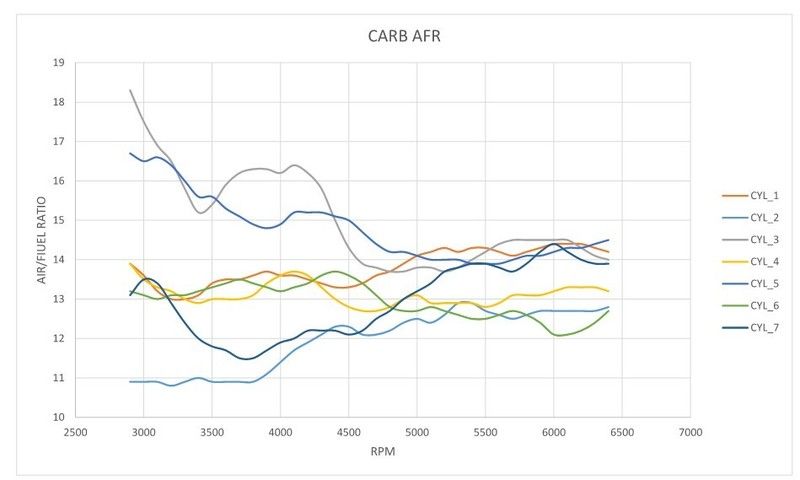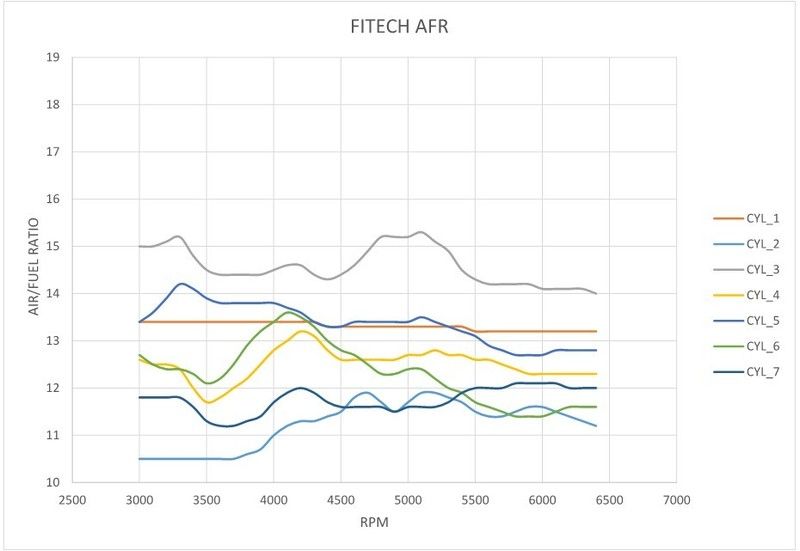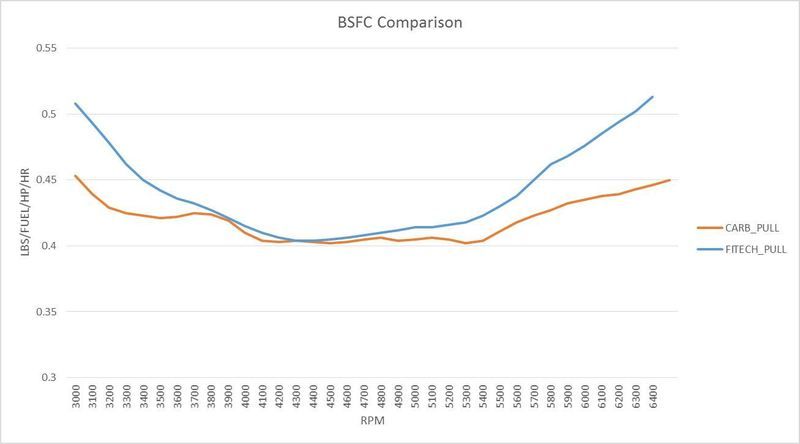| FAQ |
| Members List |
| Social Groups |
| Calendar |
| Search |
| Today's Posts |
 |
|
| Pontiac - Boost Turbo, supercharged, Nitrous, EFI & other Power Adders discussed here. |
| Reply |
|
|
Thread Tools | Display Modes |
 |
|
| Pontiac - Boost Turbo, supercharged, Nitrous, EFI & other Power Adders discussed here. |
| Reply |
|
|
Thread Tools | Display Modes |
|
#21
|
|||
|
|||
|
Would like to have seen if the single plane could have helped cyl. to cyl. afr spread.
__________________
GOOD IDEAS ARE OFTEN FOUND ABANDONED IN THE DUST OF PROCRASTINATION |
|
#22
|
||||
|
||||
|
Great test and write up.
And shows what having 02 sensors in all tubes can help also. What gas tank do you have planned to use for autocrossing?
__________________
Skip Fix 1978 Trans Am original owner 10.99 @ 124 pump gas 455 E heads, NO Bird ever! 1981 Black SE Trans Am stockish 6X 400ci, turbo 301 on a stand 1965 GTO 4 barrel 3 speed project 2004 GTO Pulse Red stock motor computer tune 13.43@103.4 1964 Impala SS 409/470ci 600 HP stroker project 1979 Camaro IAII Edelbrock head 500" 695 HP 10.33@132 3595lbs |
|
#23
|
|||
|
|||
|
W've got a fabricated aluminum tank with an in-tank Aeromotive fuel pump and a Holley Hydra-Mat pick up.
The Hydra-Mat is the key to autocross.
__________________
1964 Catalina 2+2 4sp, 421 Tri-power 1965 GTO, Roadster Shop chassis, 461, Old Faithful cam, KRE heads 305 CFM, Holley EFI, DIS ignition. 1969 GTO 467, Edelbrock 325 CFM, Terminator EFI 1969 Firebird Convertible |
|
#24
|
|||
|
|||
|
Posting a few more graphs looking a little more closely at the Carb/FITech comparison.
I brought the raw data into Excel and post processed some of the multi-channel AF numbers. Eliminating the dead # 8 sensor location to clean up the data, we can see a little better the general fuel distribution of the two systems. First the best carb pull:  The area below 4000 looks a little messy, but you can clearly see the data tighten up as the air speed increases, forming a nice channel from 4000-6400 rpm. You can also see the two banks fairly clearly, odd and even cylinders grouped together. The odd numbered bank is uniformly leaner. Now the FITech best pull:  Here we can see cylinder # 3 clearly is leaner than the others, not sure why. Increased air speed does not have the same effect compressing the data together as the carb data shows, but overall the grouping appears tighter at low and mid range RPM than does the carb. Perhaps this suggests that the EFI has better fuel management at low and mid range RPM ranges. BSFC (brake specific fuel consumption) is a useful metric for looking at efficiency. It measures how many pounds of fuel are needed to make a single horsepower for an hour of time. Here is an overlay of the carb and FITech unit. Lower numbers are better (more efficient):  The EFI is using more fuel (as measured in lbs) to produce the same HP as the carb. Nothing really earthshaking here, just more data. I think it supports the general notion that EFI is (marginally) better at low and mid range RPM settings, we do see slightly better torque, and perhaps somewhat better AFR distributions at low and mid range. At higher RPM settings the carb looks a little better, and has better BSFC across the board. The real story I believe is how far self learning EFI has come over the last few years. Not too long ago, the AFR distributions of an (aftermarket) throttle body EFI would have been terrible, this system actually looks pretty decent. Keep in mind the ECU has only a single O2 sensor (on the odd bank in this case) to make all the fueling decisions, so it has to balance things. To do so, it sets a target AFR that is somewhat richer than necessary, to account for any cylinders that are too lean, in our example cylinder # 3. This results in the system using somewhat more fuel than is optimal, which is probably why the BSFC is higher than the carb. In our case, based on the cylinder # 3 lean condition, we will revise the baseline target AFT half a point richer, to insure we do not have a problem. It does also suggest that maybe there will not be a net gain in fuel economy with EFI as clearly more fuel is being used. All in all, for the money an impressive system with a really good self learning feature.
__________________
1964 Catalina 2+2 4sp, 421 Tri-power 1965 GTO, Roadster Shop chassis, 461, Old Faithful cam, KRE heads 305 CFM, Holley EFI, DIS ignition. 1969 GTO 467, Edelbrock 325 CFM, Terminator EFI 1969 Firebird Convertible |
|
#25
|
|||
|
|||
|
FYI, you can adjust the AFR in the fitech screen, there are 9 settings based on map pressure and rpm. I am sure you could lean it out a touch but I suspect the slightly richer than lean condition is by FiTech's design (definitely not what a bean counter executive at an automotive company would have allowed).
I wonder if this fuel injection system can handle race or leaded fuel. |
|
#26
|
||||
|
||||
|
Just wondering if the Fitech works with Megajolt/Edis or Megasquirt systems....anybody?
http://www.autosportlabs.net/MegaJolt_Lite_Jr. |
|
#27
|
|||
|
|||
|
You can install the fitech independent of the ignition system, it just needs a tach signal at that point.
|
|
#28
|
|||
|
|||
|
A little side note, I was informed by their tech guys that the FiTech system will also work on straight 6 engines.
Pontiac OHC w/ EFI looking a little more realistic. |
|
#29
|
|||
|
|||
|
When I look at the charts with A/F on carb versus FiTech, I see the same cylinder numbers richer or leaner so is it possible the intake is causing #3 to be lean and not a difference between EFI and carb?
|
|
#30
|
||||
|
||||
|
Quote:
Andrew
__________________
IG: projectgattago Please get in touch for Holley EFI tuning services. "You were the gun, your voice was the trigger, your bravery was the barrel, your eyes were the bullets." |
|
#31
|
|||
|
|||
|
Agreed, I sure like the Holley MPFI on my GTO. Having setup both the Holley and the FITech now, and had both on the dyno, I really appreciate the tuning flexibility the Holley system offers.
But the multi-port is quite a bit more expensive than than the FITech, and it is an open question as to whether it is worth more than twice the cost. Although the individual cylinder trim is impressive on the Holley MPFI, it does these adjustments only during dyno setup, and only if you have individual O2 sensors on each cylinder. It does not adjust these trim values dynamically, it is a static setting. So while driving there is no way for the ECU to update the fuel trims on demand. I think for a boosted engine I would prefer MPFI exactly for this reason, having individual fuel trims is very useful in setting up a FI motor. For a naturally aspirated engine, the case is harder to make. In our case, I think we have concluded that we had a slight vacuum leak during the dyno pulls, likely from the NPT plug on the intake just over the # 3 cylinder (you can see it in the first picture in post # 17). After the test, we noted this plug was not fully tight. It wasn't exactly loose, but it did take a half turn or so to bring it snug, so it might have contributed to the lean cylinder. It's suspicious that it is right over # 3. Since the test, we now have engine in the car and have set the fuel system up as a "deadhead" (no return line). We have done this using a factory GM ZL-1 late model in-tank fuel pump (about $250) controlled by a Vaporworks PWM controller. The GM pump has an integrated fuel level sensor, and a really good one at that. So for ~ $250 you get a high reliability OEM pump and a built in level sensor. In our case, we opted to go for the PWM controller (about $450) but it is not necessary to deadhead the FITech.
__________________
1964 Catalina 2+2 4sp, 421 Tri-power 1965 GTO, Roadster Shop chassis, 461, Old Faithful cam, KRE heads 305 CFM, Holley EFI, DIS ignition. 1969 GTO 467, Edelbrock 325 CFM, Terminator EFI 1969 Firebird Convertible |
| Reply |
|
|